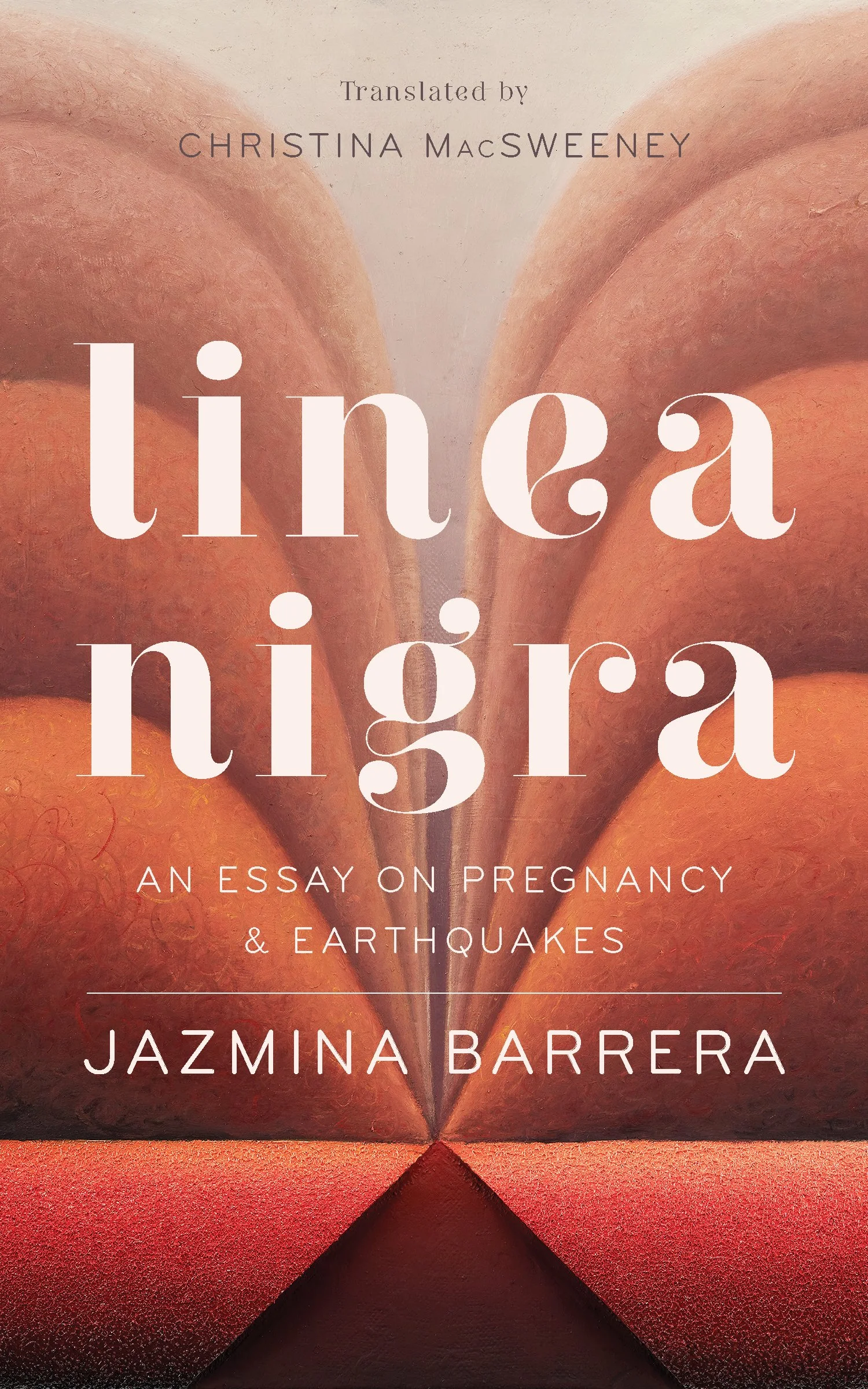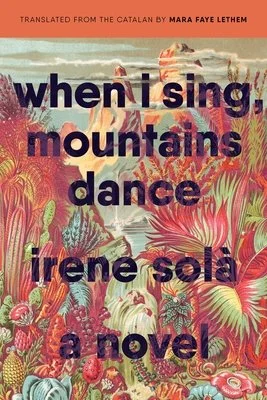Hot Off the Shelf: Linea Nigra by Jazmina Barrera
[image description: The book cover for Linea Nigra, which is a geometric, abstract pink and red design with the title in white stylized letters.]
Disclaimer: I received an ARC of this book in exchange for an honest review. If you’d like to buy a copy, there’s an affiliate link at the bottom of the page.
Being a book reviewer and bookstagrammer, I’m sometimes surprised by the books that show up at my house. Most of the time I communicate with publicists who know my taste in books and let them know when I find a title interesting, then other times books show up on my porch as a surprise. A surprise book is NEVER unwelcome––I’m always thrilled to receive them, though I’ll admit that I was a little skeptical of Linea Nigra at first.
For one, I don’t have children and have no plans to acquire any (whether through birth, adoption, or fostering). God forbid if something happened and my niece or a friend’s kid needed a place to live, I’d absolutely take them in, but I’ve never felt that yearning biological desire to have kids the way some people do. I love the small humans in my life, and I especially love sending them books and seeing pictures and videos of them doing adorable things, but I’ve never looked at a baby and thought, “that’s what’s missing in my life.”
For those reasons, I didn’t think Linea Nigra would be interesting to me, but I chose to read it anyway because 1) I’m at the age when a number of my friends have small children and if I can learn something that will allow me to support them, I’d like to do that, and 2) the book is very short. While I recognize the lack of “literary” writing about motherhood, babies, breastfeeding, etc., and am glad to see that the cannon is being rectified by authors like Jazmina Barrera, I personally don’t have a desire to read a massive tome on the subject. And, as tired as new moms are, I can’t imagine they’d be up for a doorstopper of a book either.
Before I dive in further, the synopsis:
Simultaneously a work of collaboration between mother and child and a diary of worry and joy, Linea Nigra is an intimate exploration of childbearing from the celebrated author of On Lighthouses. Drawing from a wide range of inspirations and traditions, from Louise Bourgeois to Ursula K. Le Guin to the influential indigenous Nahua model Luz Jiménez, Barrera’s treatise is as philosophical as it is candid. It is a book that clarifies motherhood, but also celebrates the mysteries of the body—like the linea nigra, the black line, itself.
Writing over the course of her first pregnancy, birthing, breastfeeding, and young motherhood, Barrera embraces her subject fully. She intersperses notes from her reading life, making lucid connections between maternity and earthquakes, lunar eclipses, plants, and animals. She sends out an impassioned call for a great proliferation of pregnancy books: for more writing by the expectant; for a canon and a counter-canon of motherhood prose—each of them a shrine and generous guide to all of these radical acts.
First, I want to say go buy this book for every pregnant person and new mom you know because I think they’ll feel seen and understood by Barrera’s writing and observations. And they’ll be able to read in short bursts, which is helpful for the ways in which their schedules will be upended. Every pregnant person and new mom I’ve ever known has felt isolated during that time and has longed to connect with other people who are currently going through or have recently gone through the experience of pregnancy and childbirth themselves, so I think Linea Nigra is an excellent way to connect textually.
In terms of me, someone neither pregnant nor a mother, reading Linea Nigra, I had mixed feelings. Barrera writes beautifully and her observations or gorgeously rendered. I learned a lot about the symbiotic relationship between mother and fetus/mother and child that I didn’t know before––like the way the baby’s saliva gets suctioned into the breast during breastfeeding and the mother’s body responds to that information and creates antibodies the baby needs then dispenses that altered milk in subsequent feedings. I found the fragments with facts like that interesting because they’re things I wouldn’t likely hear in my child-free day-to-day life.
The tagline for the book is “An Essay on Pregnancy and Earthquakes,” so I was expecting the majority of the book to focus on pregnancy, rather than childbirth and motherhood, and for there to be a significant discussion about earthquakes in a way that likens them to the pregnant state of being. I’d say the book is half pregnancy and half motherhood/breastfeeding. Earthquakes, however, don’t really come up meaningfully until about halfway through the book.
The area where Barrera lives gets earthquakes fairly often, so there are passages where she describes her and her partner and their neighbors running outside so they won’t be squashed under their house, should it fall. Barrera’s mother is a painter, so she also talks about the pieces of her mother’s work that were in a storage facility that collapsed during an earthquake and how some of those paintings were completely destroyed. As an artist myself, those passages made me sick to my stomach to read, but they were also the ones I found most compelling.
Outside of one direct passage likening pregnancy to an earthquake, both being earth-shattering events, the link between the two didn’t really make sense to me. I enjoyed the passages about both pregnancy and earthquakes individually, but the link between them was totally lost on me. I’m not sure if that’s a lack of imagination or understanding on my part or something that got lost in translation (the book was translated from Spanish to English). To be clear, I enjoyed it, I just expected more of a concrete, tangible connection and meditation on pregnancy and earthquakes together, not as individual entities inhabiting the same book, given the subtitle.
I also felt that the book ended abruptly, but that could be an intentional stylistic choice for a couple of reasons. First, the story of Barrera’s son is ongoing––at the end of Linea Nigra he’s still breastfeeding. She wrote the book more or less in real-time and I understand that it’s hard to end a story that isn’t actually over. Additionally, if the idea was to end the book abruptly because earthquakes end things abruptly, then I understand that stylistic choice. Linea Nigra is written in fragments that are between a paragraph and three pages apiece, so the fragmented nature of the braided essay does mimic earthquakes.
I’ve noticed something: Because I’ve spent so much time editing my own work and other people’s work, it’s hard for me to read books without imagining what I would have done as that book’s editor. Many times I agree with the decisions that were made (even though I’m not fully conscious of what they were since I didn’t read the manuscript in draft form) because I can’t think of anything I would have changed. If I’d been the editor for Linea Nigra, I would’ve wanted to strengthen the connection between pregnancy and earthquakes and round out the ending a little more, but not much else.
All that to say, I’m glad I read Linea Nigra and it was good and I hope you give copies to all the pregnant people and parents you know, but I also hope this review gives you a little more of an idea of what to expect so you can enjoy it without confusion.
If you’d like to buy a copy for yourself or someone you love, I’d appreciate it if you’d purchase using my Bookshop link below. Bookshop is an Amazon alternative that supports indie bookstores and blogs like this one.






